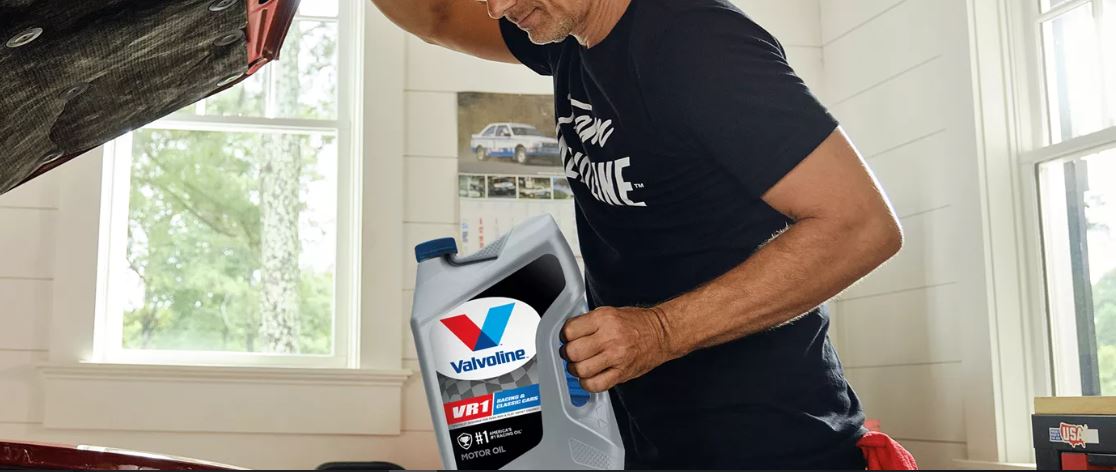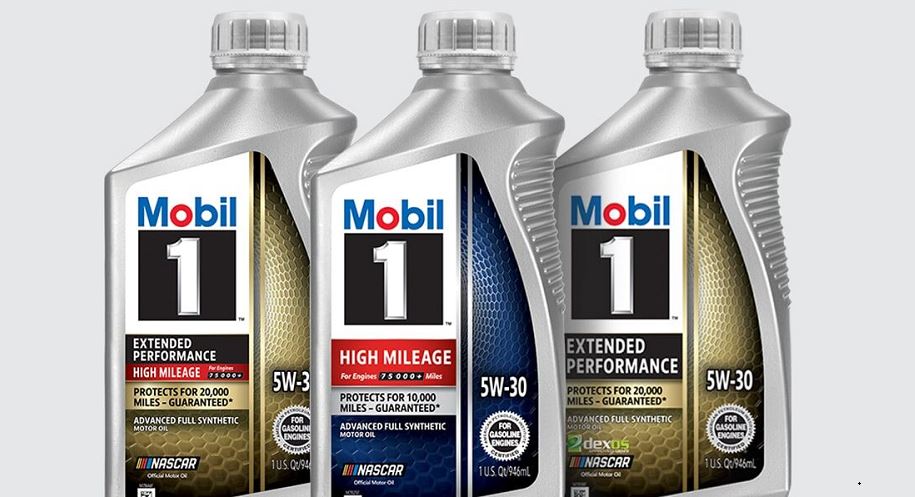
Engine oil helps your engine to perform its job. Its main task is cleaning, lubricating, and protecting the moving parts of your vehicle engine. But not all oils help your engine to work better.
To ensure that your vehicle engine is performing well, you need to give it the right engine oil. That’s where the discussion of different oils comes up.
SAE 30 and 5w30 are two engine oils you’ll find in the market. Though both of them are engine oils, they are not similar when it comes to their features and abilities. This is what we’re going to discuss today. If you’re confused between these two oils, check this SAE 30 vs 5w30 comparison, and you’ll have a clear idea.
What is SAE 30?
SAE stands for Society of Automotive Engineers. It has designed the way of defining an oil’s viscosity with a code-based system.
30 stands for the viscosity of the oil. Viscosity is defined by a fluid’s resistance to flow. It can be compared with thickness too. Liquids with higher thicknesses are more resistant to flow. So, we can tell thicker liquids have higher viscosity.
SAE 30 stands for oils that come with a viscosity rating of 30.
What is 5w30?
5w30 shows the viscosity of oils too. But the structure is different a bit.
‘w’ means winter in this system. The number before ‘w’ shows the viscosity of the oil in winter. And the number after ‘w’ expresses the oil’s viscosity in summer.
So, you can see that 5w30 oils have multiple viscosity depending on the temperature. This is what does the magic.
Is SAE 30 the Same as 5w30?
The similarity between SAE 30 and 5w30 is both are engine oils used on vehicle and garden tools engines. Another similarity is- both show similar thickness when it is summer.
But the differences between these two oils are many. They come with different compositions, have different viscosity in winter, and offer different abilities. As a result, the use case and oil changing frequency are different too. These differences have an impact on their costs too.
So, till now, all you can understand is- SAE 30 and 5w20 are not the same. You’ll know more about these later in this article.
SAE 30 vs 5w30: The Differences
I hope you’ve understood SAE 30 and 5w30 pretty well. Now let’s come to the differences.
Oil Grade
The first difference is in the oil grade.
SAE 30 is a single-grade oil, which means it doesn’t change its viscosity with the temperature change. It comes with a viscosity of 30, and no matter what the temperature is, the viscosity remains the same. Oils with high viscosity are good to work with in summer. So, you can use this oil in summer only.
On the other hand, 5w30 is a multi-grade oil. It changes its viscosity with the change in the temperature outside. In summer, its viscosity rating is 30. In winter, it becomes thinner and performs like any oil having a viscosity of 5. So, you can use it in multiple weather conditions without hampering the engine.
Additives that Change Thickness
The magic of changing the viscosity is done by the additives used in the multi-grade oils. 5w30 oil comes with an additive, like viscosity index improver, that allows it to show different viscosity in different temperatures.
When the temperature is high, it keeps the oil thick. On the other hand, it helps the oils to be thinner when the temperature is low. Thus, additives help multi-grade oils like 5w30 to work well in both temperatures.
On the other hand, SAE 30 or other single-grade oils don’t come with such additives to change thickness. So, the viscosity remains the same.
Other Additives
Single-grade oils are free from most other additives too. SAE 30 is a non-detergent oil that works to gather all the contaminants that can possibly damage the engine by not allowing them to stick to sidewalls or cracks. As a result, it gets dirty quickly.
On the other hand, 5w30 comes with multiple additives. It contains chemicals that break down sludge. So, the oil doesn’t become dirty quickly. Also, it has a corrosion preventer that keeps rust away. To ensure a long life, it comes with stabilizing acids.
Oil Changing Interval
SAE 30 collects sludges. As it doesn’t have anything to break down sludges, the oil gets dirty quickly. So, you need to change the oil frequently at short intervals.
On the other hand, 5w30 comes with multiple additives that break down sludges quickly. As a result, they can’t harm your engine. As most of the sludge is broken down, the oil remains cleaner for a long time. Thus, you can change the oil after comparatively long intervals.
Use Cases
SAE 30 and other single-grade oils are perfect for small engines like small tractors, lawnmowers, chainsaws, and garden tools. Also, it can be used in old vehicle engines if the engine supports an oil with viscosity 30.
Differently, 5w30 is suitable for use in larger engines like car and truck engines. However, newer engines are more likely to accept such oils. Still, make sure that your engine accepts it before pouring it inside.
SAE 30 & 5w30 Comparison Table
| Features: | SAE 30 | 5w30 |
| Viscosity: | It comes with a viscosity rating of 30. | It has a viscosity rating of 5 in winter and 30 in summer. |
| Grade: | Single-grade oil | Multi-grade oil |
| Detergent: | Doesn’t have any detergent | Comes with multiple detergents for several purposes |
| Weather Condition: | For hot weather | For both hot and cold weather |
| Oil Changing: | Need to be changed frequently | Remains comparatively longer |
| Capability: | Don’t clear dirt and debris from engine components properly | Effectively cleans and breaks down dirt and debris |
| Use Case: | Good for small or old engines | Good for new and large engines |
| Cost: | Economic engine oil with a cheaper price tag | A bit expensive engine oil |
Can I Use SAE 30 instead of 5w30?
Many people ask such questions because both oils come with the same viscosity in summer.
Well, the answer is- yes, but on several conditions.
First, the engine that supports 5w30 looks for oil with a viscosity rate of 30 in summer. So, if the weather condition is hot, you can use SAE 30 instead of 5w30. But you need to change the oil before the weather becomes cold.
Also, SAE 30 doesn’t come with additives in most cases. So, you can’t expect the same performance as like 5w30.
Another thing you need to keep in mind is SAE 30 gets dirty quickly. So, you may have to change it soon.
Can I Use 5w30 instead of SAE 30?
Sure! You can use 5w30 in your SAE 30-supported engine, especially in small engines. 5w30 shows a similar viscosity to SAE 30 in hot weather. Also, with the change in weather, it protects the engine better than SAE 30. That’s why using 5w30 instead of SAE 30 is accepted.
However, checking the manufacturer’s guidelines is always recommended. It might take some time, but you’ll get the exact answer to the question.
Though experts say that doing this is not a big deal, try to use the exact oil that the manufacturer has suggested.
Best SAE 30 Oil: Valvoline VR1 Racing SAE 30 Motor Oil

Valvoline offers the best SAE 30 oil, in my opinion. It is a completely organic oil that offers race-like protection to your engine while keeping it running smoothly.
To ensure smooth and high performance, Valvoline has added a high amount of zinc and phosphorus to this oil. Also, it comes with anti-foam properties to keep the engine well and protected during stress.
This oil is designed to enable maximum horsepower of the engine by reducing friction as much as possible. So, you can expect better performance from it. Most racers love this because of the performance it offers.
Though it is formulated for racing engines, passenger vehicles that support single-grade oils can use it too. Also, it is applicable in tool engines too that require single-grade oil.
It doesn’t cost you much, as you’ll see it comes with a pocket-friendly price tag. If you’re looking for an SAE 30 oil that offers value for the money you spend, try this oil from Valvoline.
Pros:
- Full organic oil with more zinc and phosphorus
- Ensures value for money
- Suitable for racing and regular use
- Reduces engine component wear
Best 5w30 Oil: Mobil 1 Advanced Full Synthetic Motor Oil 5W-30

This is one of the best 5w30 oils for many reasons. One of the main reasons is- it comes with the Triple Action Formula designed by Mobil to ensure performance, protection, and cleanliness.
ILSAC GF-6 standards are met by this oil to ensure the best protection for engine components. It keeps them safe from wear and tear. Also, it prevents sludge and deposit build-up caused by continuous circulation. Thus, it remains clean, and the engine remains safe.
Also, it is designed to ensure maximum protection from temperature. It works well even when the engine is extremely hot (up to 500 degrees Fahrenheit). Also, it tolerates when it is cold outside (up to -30 degrees Fahrenheit).
Mobil claims it is durable enough to protect your engine for 10,000 miles or a year. The real-life experience says almost the same. Within this time, it ensures outstanding performance to satisfy the user.
Besides durability, it offers good mileage too. It may seem a bit expensive, but you’ll enjoy using this 5w30 oil from Mobil.
Pros:
- Equipped with Triple Action Formula
- Supports engine well for a long time
- Made to withstand and work in extreme temperatures
- Improves mileage and engine performance
- Suggested by a lot of enthusiasts
Mobil 1 Full Synthetic Motor Oil Video Review
Final Verdict
SAE 30 and 5w30 come with a lot of differences. So, the applications are different too. Starting from the structure to use cases, these two oils are completely different in many fields.
I hope now you know the dissimilarities better. This would help you to make the right decision.
As the viscosity is similar in hot temperatures, many might suggest you interchange them. But, not doing such is the best option. While looking for engine oil, always follow the manufacturer’s recommendations. This would help you to run your engine better.
Leave a Reply